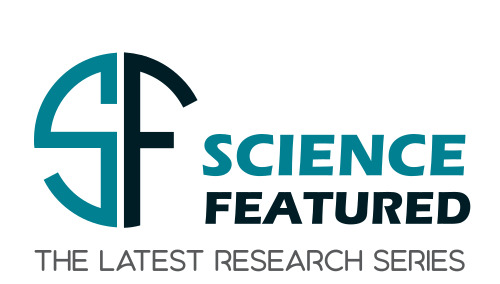Patellar chondropathy, also known as runner’s knee, is a common orthopedic condition characterized by pain and deterioration of the patellar cartilage. Affecting primarily younger, active individuals, this condition can progress to patellofemoral osteoarthritis if left untreated. A recent study has explored the potential benefits of combining hyaluronic acid (HA) and platelet-rich plasma (PRP) for the treatment of patellar chondropathy, providing a promising alternative to traditional therapies.
A team of researchers from various Brazilian institutes, led by Dr. Fábio Costa from FC Sports Traumatology Clinic and Gabriel Silva Santos from Brazilian Institute of Regenerative Medicine, conducted this study. The research was published in the peer-reviewed journal Biomedicines.
Patellar chondropathy often results from trauma, instability, or occupational hazards, leading to symptoms like swelling, edema, and cartilage softening. If untreated, it may progress to patellofemoral osteoarthritis, a more severe condition that might require surgical interventions. Traditional treatments usually involve rest, immobilization, physical therapy, and non-steroidal anti-inflammatory drugs (NSAIDs). However, these methods may not suffice for advanced stages, necessitating more invasive procedures.
The study highlights the regenerative potential of HA and PRP, which have been extensively used to treat various musculoskeletal disorders. HA, a naturally occurring substance in the body, provides lubrication and anti-inflammatory effects, aiding in pain relief and cartilage regeneration. PRP, derived from the patient’s blood, contains growth factors that promote healing by stimulating cell proliferation, differentiation, and tissue regeneration.
The researchers emphasize that combining HA and PRP can offer superior results compared to using either treatment alone. “The combination of HA and PRP has shown enhanced efficacy in managing patellar chondropathy, offering a minimally invasive and cost-effective treatment option,” said Dr. Costa.
In their study, the research team reviewed the literature, focusing on the regenerative potential of HA and PRP. They detailed the pathophysiology of patellar chondropathy, emphasizing how these orthobiologics can modulate inflammation, improve biomechanics, and stimulate the natural healing processes. The study also explored the preparation methods of PRP, highlighting the importance of standardizing protocols to ensure consistent treatment outcomes.
Hyaluronic acid functions by binding to cell surface receptors, reducing the expression of inflammatory cytokines and promoting the synthesis of endogenous HA. This dual-phase action—mechanical and pharmacological—enhances the protective properties of synovial fluid, providing pain relief and preventing further cartilage damage. Meanwhile, PRP, with its rich concentration of growth factors, aids in rapid neovascularization and tissue regeneration, making it a potent therapeutic agent for musculoskeletal injuries.
Combining HA and PRP can provide a functional matrix that supports cartilage repair and improves joint biomechanics. Clinical studies have demonstrated significant improvements in pain relief and physical function in patients receiving combined HA and PRP injections compared to those receiving HA alone. “This synergistic approach not only enhances the therapeutic efficacy but also offers a practical, minimally invasive solution for patients with patellar chondropathy,” Dr. Costa added.
In summary, the study of Dr. Costa and colleagues demonstrated that the synergistic effects of HA and PRP present a promising alternative for treating patellar chondropathy. This combination therapy offers enhanced pain relief, improved joint function, and supports tissue regeneration, providing a viable option for patients seeking non-surgical treatments. As research progresses, the standardization of PRP preparation protocols and further clinical trials will be crucial in establishing these orthobiologics as a mainstay in orthopedic treatment strategies.
Journal Reference
Costa, F.R., Santos, M.d.S., Martins, R.A., Costa, C.B., Hamdan, P.C., Da Silva, M.B., Azzini, G.O.M., Pires, L., Menegassi, Z., Santos, G.S., et al. “The Synergistic Effects of Hyaluronic Acid and Platelet-Rich Plasma for Patellar Chondropathy.” Biomedicines 2024, 12, 6. DOI: https://doi.org/10.3390/biomedicines12010006
About the Authors

Dr. Fábio Costa is a renowned orthopedic specialist and the lead clinician at the FC Sports Traumatology Clinic in Brazil. With extensive experience in sports medicine and orthopedics, Dr. Costa has been at the forefront of integrating cutting-edge regenerative techniques into clinical practice. His expertise includes the use of hyaluronic acid for the treatment of joint disorders and cartilage injuries. Dr. Costa is dedicated to enhancing patient care through evidence-based medicine and has published articles in high-impact medical journals. His leadership in the field has significantly contributed to the development of effective, non-surgical treatments for musculoskeletal conditions.

Gabriel Silva Santos is a prominent researcher at the Brazilian Institute of Regenerative Medicine, specializing in the field of orthobiologics and regenerative therapies. With a strong background in musculoskeletal regeneration, Gabriel has contributed extensively to advancing non-surgical treatment options for various orthopedic conditions. His work focuses on the synergistic effects of biological agents like hyaluronic acid and platelet-rich plasma, aiming to improve patient outcomes through innovative and minimally invasive therapies. Gabriel’s research is widely published in peer-reviewed journals, and he is committed to translating scientific discoveries into practical clinical applications.













































